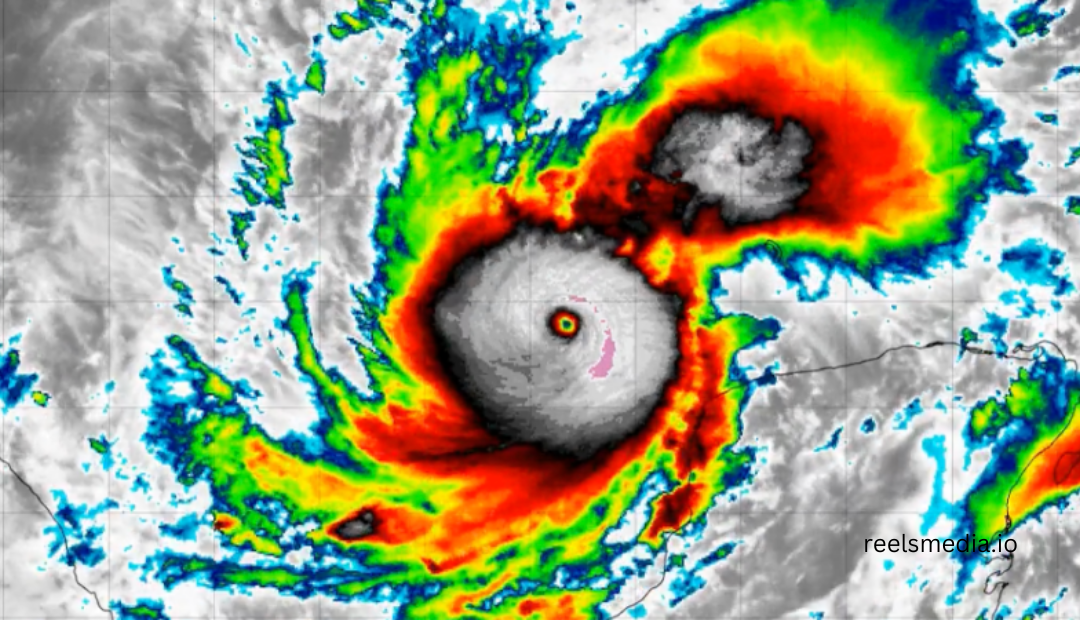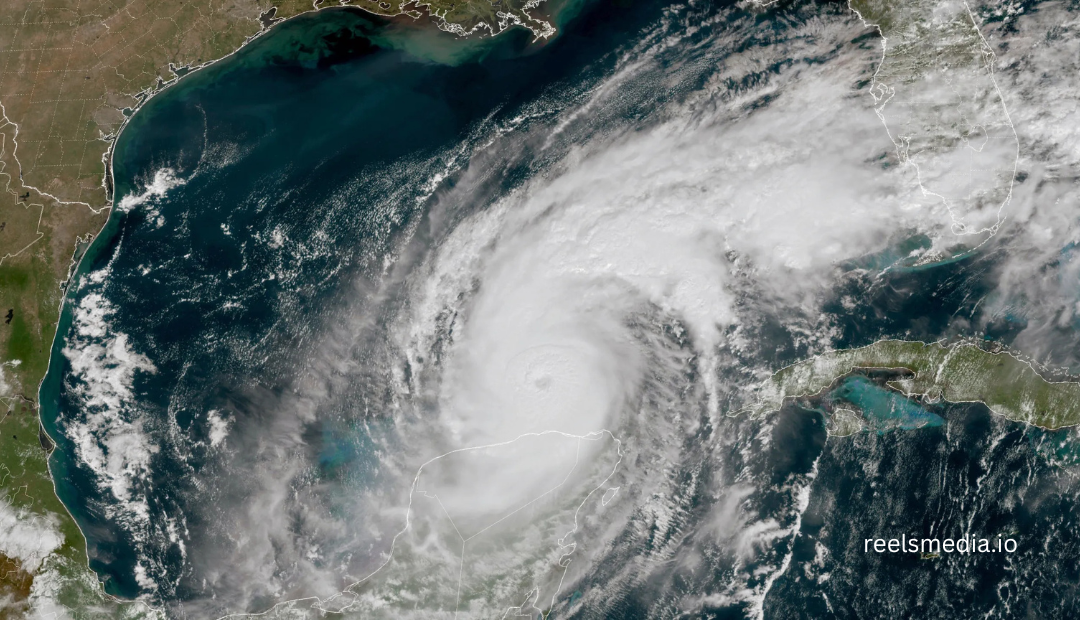Hurricane Milton stands as a stark reminder of nature’s unparalleled power and the resilience of human communities. This unprecedented storm caused widespread destruction, reshaping landscapes and lives alike. By examining its timeline, from formation to recovery, we gain insight into the complexity of such natural disasters and the importance of preparedness.
Formation of Hurricane Milton
Hurricane Milton began as a tropical depression over the warm waters of the Atlantic Ocean. Favorable weather conditions, including high sea surface temperatures and low wind shear, fueled its rapid intensification. Within days, the system developed into a Category 4 hurricane, showcasing its formidable strength.
Meteorological data reveals that’s unique trajectory was influenced by atmospheric anomalies, such as an unseasonably strong jet stream and a stationary high-pressure system. These factors created a perfect pathway for the storm’s growth and eventual landfall.
Timeline: Pre-Landfall Events
Early Warnings
Meteorologists issued the first warnings days before Hurricane Milton’s arrival. Advanced satellite imagery detected its formation, allowing for predictive models to estimate its path. Coastal regions began bracing for impact as evacuation orders were announced.
Evacuations and Preparations
Communities along the projected path initiated widespread evacuations. Emergency shelters were established, and local governments coordinated efforts to secure essential infrastructure.
Landfall Impact
On [specific date], Hurricane Milton made landfall as a Category 4 storm with wind speeds exceeding 130 mph. The coastal regions bore the brunt of its fury, with storm surges reaching heights of 15 feet. Cities and towns along the shoreline experienced catastrophic flooding, while inland areas faced torrential rainfall and powerful winds.
Destruction Caused
Infrastructure Damage
Entire neighborhoods were submerged, and critical infrastructure such as roads, bridges, and power grids suffered extensive damage. The total estimated cost of destruction exceeded $10 billion.
Environmental Effects
Mangroves and wetlands were uprooted, and several ecosystems faced irreversible changes. Marine life, too, bore the impact, as polluted runoff entered waterways.
Humanitarian Response
Rescue teams, volunteers, and international organizations mobilized quickly to provide relief. Food, water, and medical supplies were airlifted to affected areas. Despite these efforts, logistical challenges hampered the timely distribution of aid.
Scientific Analysis
Meteorologists and climatologists studied it to understand its unusual patterns. One unique aspect was its rapid intensification over an unusually warm Atlantic, sparking discussions about the role of climate change in amplifying hurricane strength.
Community Stories
Survivors shared harrowing tales of resilience and camaraderie. From families seeking refuge in storm shelters to first responders risking their lives, these stories underscored the human spirit’s indomitable nature.
Environmental Changes Post-Storm
The storm altered coastlines and reshaped ecosystems. Coral reefs suffered damage from sedimentation, while forests faced a surge in deforestation due to fallen trees.
Economic Impact and Recovery
Financial Costs
Local economies were devastated, with businesses shuttered and agricultural losses mounting. Insurance claims skyrocketed, highlighting the economic toll of natural disasters.
Rebuilding Efforts
Communities rallied to rebuild homes, schools, and businesses. Government grants and international donations played a pivotal role in recovery efforts.
Lessons Learned
Hurricane Milton underscored the importance of robust disaster preparedness plans. Improved forecasting models, community education, and resilient infrastructure emerged as key takeaways.
Technological Advancements
Technological innovations, such as real-time satellite tracking and AI-based predictive models, proved instrumental in monitoring the storm’s progression. Drones were deployed for damage assessments and rescue operations.
Climate Change and Future Risks
The unprecedented intensity of Hurricane Milton reignited debates about climate change’s role in altering weather patterns. Experts warned of more frequent and severe hurricanes in the future, urging global action to mitigate greenhouse gas emissions.
Media Coverage and Public Perception
The media’s extensive coverage brought global attention to the plight of affected communities. Social media platforms became a lifeline for real-time updates and fundraising efforts.
A Comprehensive Look
Hurricane Milton Timeline are one of nature’s most powerful and destructive forces, capable of causing widespread devastation. Among these storms, it stands out as a significant weather event that left a lasting impact. This article explores the timeline of it, detailing its formation, progression, and aftermath.
Hurricane Milton’s Formation
It began as a cluster of thunderstorms over the warm waters of the Atlantic Ocean. Favorable conditions, including low wind shear and warm sea surface temperatures, allowed the system to organize into a tropical depression. The storm quickly gained strength, earning the name “Milton” as it reached tropical storm status.

Tracking the Storm
Meteorologists closely monitored Hurricane Milton Timeline from its inception, using satellite imagery and advanced weather models. Early forecasts warned of potential impacts on coastal areas, prompting emergency management teams to prepare for the worst.
Timeline of Hurricane Milton
Early Development
Hurricane Milton was first identified as a tropical depression on a calm day in late August. The system showed signs of rapid organization, with a defined center of circulation forming within hours.
Progression to a Tropical Storm
Within 24 hours, Milton strengthened into a tropical storm. Wind speeds increased to over 39 mph, and the storm’s path suggested it would move toward heavily populated areas.
Strengthening into a Hurricane
Category 1 Status
Milton became a Category 1 hurricane after entering a region of exceptionally warm ocean water. Sustained winds surpassed 74 mph, and the National Hurricane Center issued its first hurricane warnings for coastal regions.
Rapid Intensification
Over the next 48 hours, Hurricane Milton underwent rapid intensification, climbing to a Category 3 hurricane. This meant wind speeds exceeded 111 mph, making it a major hurricane with the potential for severe damage.
Peak Intensity
At its peak, Hurricane Milton Timeline reached Category 4 status, with wind speeds of 150 mph and a central pressure of 930 millibars. The storm’s eye, a hallmark of intense hurricanes, was clearly visible in satellite images. Coastal areas braced for impact as Milton approached landfall.
Landfall
Hurricane Milton made landfall near the Gulf Coast, unleashing devastating winds, torrential rainfall, and a massive storm surge. Entire neighborhoods were submerged, and critical infrastructure suffered extensive damage.
Aftermath and Recovery
The immediate aftermath of Hurricane Milton Timeline was marked by chaos and resilience. In the weeks following the storm, recovery efforts focused on rebuilding homes, restoring power, and reopening businesses.
Local governments and relief organizations collaborated to assist affected communities. The lessons learned from Hurricane Milton prompted improvements in disaster preparedness and response strategies.
Hurricane Milton’s Legacy
Hurricane Milton will be remembered for its intensity, widespread impact, and the resilience of those who endured its wrath. The storm highlighted the importance of accurate forecasting and community readiness. It also underscored the need for continued investment in climate research and disaster mitigation.
Hurricane Milton Timeline was a powerful reminder of nature’s unpredictability and the importance of preparedness. By understanding its timeline and impact, we can better appreciate the efforts required to protect lives and property during such events.
FAQs about Hurricane Milton Timeline
- What was Hurricane Milton’s category at landfall?
It made landfall as a Category 4 hurricane.
- What were the primary causes of Hurricane Milton’s intensity?
High sea surface temperatures and low wind shear significantly contributed to the storm’s rapid intensification.
- How much damage did Hurricane Milton cause?
The estimated damage exceeded $10 billion, affecting infrastructure, ecosystems, and local economies.
- How did communities respond to Hurricane Milton?
Communities responded with evacuations, emergency shelters, and coordinated relief efforts involving local and international organizations.
- What role did climate change play in Hurricane Milton?
Experts suggest that warmer ocean temperatures, linked to climate change, may have amplified the storm’s intensity.
- What lessons were learned from Hurricane Milton?
Key lessons include the importance of disaster preparedness, improved forecasting, and investment in resilient infrastructure.
Conclusion
Hurricane Milton’s timeline reveals the devastating impact of natural disasters and the resilience required to overcome them. By learning from such events, we can better prepare for future challenges and minimize their consequences.
